Dr Chris Langley
Birth, Infanticide and Midwifery in early modern Scotland.
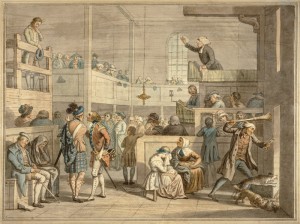
Reproduced from WikiCommons
The Church of Scotland was obsessed with sex. More accurately, ecclesiastical leaders in sixteenth and seventeenth century Scotland were alarmed by the loose morality of their congregations. By the seventeenth century, Scotland was divided into twelve provinces and seventy-two presbyteries, all charged with stamping out prevalent sins. If Scotland was to be the new Jerusalem, it had to act quickly ‘for pacifieing the wrath of god, justlie kindled against the land’.1 The preponderance of bastard children and extra marital relations proved expensive to parish coffers and undermined the image of a truly reformed community.
This system seems very straightforward. The Church had a sliding scale of punishments for sexual offenders: first-time fornicators were ordered to appear on a stool of repentance for three consecutive Sundays; adulterers were ordered to sit for up to six months, while the baptism of illegitimate children was withheld until repentance was performed. In practice, however, the application of discipline was much more nuanced. In prosecuting sexual misdemeanours, local authorities had to prove a crime had occurred – and this is where the male-dominated ecclesiastical leadership experienced a problem. As in other areas of early modern Europe, the Scottish birthing room was a dominated by female figures. Church authorities had to tap into this channel of information through dialogue and negotiation in order to establish whether certain crimes had been committed.
 Authorities entered this female domain through intermediaries – usually women present at the birth of a child. The first conduit of information was the midwife. In 1645, the minister of Stobo in the Borders was ordered to speak to the midwife who delivered Isobell Alexander’s child in 1640 to try ‘if the woman spake anything at her delivery, who was her Bairn’s father’.2 In 1655, the Presbytery of Dalkeith, near Edinburgh, questioned the midwife who delivered Elizabeth Watson’s child. The midwife, Agnes Thomson, replied that ‘befor she tuiched her she mad[e] her declair upon her oath who wes the father of her child’.3 The authorities policed local midwives to ensure such practices were enforced.
Authorities entered this female domain through intermediaries – usually women present at the birth of a child. The first conduit of information was the midwife. In 1645, the minister of Stobo in the Borders was ordered to speak to the midwife who delivered Isobell Alexander’s child in 1640 to try ‘if the woman spake anything at her delivery, who was her Bairn’s father’.2 In 1655, the Presbytery of Dalkeith, near Edinburgh, questioned the midwife who delivered Elizabeth Watson’s child. The midwife, Agnes Thomson, replied that ‘befor she tuiched her she mad[e] her declair upon her oath who wes the father of her child’.3 The authorities policed local midwives to ensure such practices were enforced.
In speaking to midwives and other local women, authorities had little choice but to place significant trust in the knowledge contained in their depositions. This was particularly the case in understanding the timing of a child’s conception and the length of gestation of premature infants in order to gauge parentage.
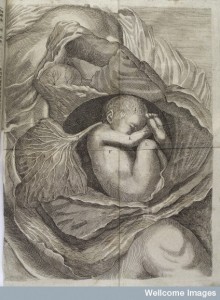 In the case of an unidentified woman in Caithness Presbytery in 1655, the authorities asked ‘the midwife and severall other woman’ present at the birth, if the ‘child wes come to the full time’ in order to verify Andrew Mowat as its father.4 Another case, that of Euphame Anderson, a parishioner in Dunfermline, is revealing. Having kept her pregnancy secret, Anderson gave birth to a baby boy in April 1646. Following the birth, Anderson named a number of men as potential fathers all of whom had been present in the town at different times the previous year. Adding to the complexity, the child was premature. The authorities went about testing these claims by ascertaining the development of Anderson’s newborn child to match it to a possible father. Janet Murray told the session that the child ‘hade naills bot very soft naills and could not think it was borne to the full tyme’. Local midwife Janet Henrison visited the child a little after the birth, ‘and sawe ye bairne that it hade soft naills lyke other bairnes bot … [it] lookit not up whereby she thought the bairne was not borne to the full tyme’.5 The Dunfermline authorities had to rely on the accuracy of this information to ascertain the identity of the father and when the child had been conceived.
In the case of an unidentified woman in Caithness Presbytery in 1655, the authorities asked ‘the midwife and severall other woman’ present at the birth, if the ‘child wes come to the full time’ in order to verify Andrew Mowat as its father.4 Another case, that of Euphame Anderson, a parishioner in Dunfermline, is revealing. Having kept her pregnancy secret, Anderson gave birth to a baby boy in April 1646. Following the birth, Anderson named a number of men as potential fathers all of whom had been present in the town at different times the previous year. Adding to the complexity, the child was premature. The authorities went about testing these claims by ascertaining the development of Anderson’s newborn child to match it to a possible father. Janet Murray told the session that the child ‘hade naills bot very soft naills and could not think it was borne to the full tyme’. Local midwife Janet Henrison visited the child a little after the birth, ‘and sawe ye bairne that it hade soft naills lyke other bairnes bot … [it] lookit not up whereby she thought the bairne was not borne to the full tyme’.5 The Dunfermline authorities had to rely on the accuracy of this information to ascertain the identity of the father and when the child had been conceived.
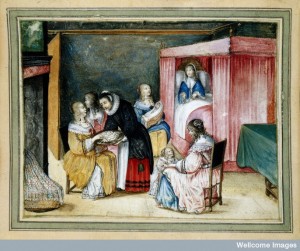 Anderson’s case hinged on one important detail that was repeated by the depositions of her neighbours: ‘there was nane with hir the tyme of her deliverie’. The reliance of authorities on birth-room sources meant that cases where the mother was alone became open to misinterpretation. In May 1645 in Brechin Presbytery, Agnes Christie’s newborn child was found dead, the mother requesting no female assistance in the labour. Christie put the dead infant into a chest in her house ‘till shee hade some quyett occasion to burie the same’. The authorities pursued her on a charge of infanticide. Being questioned, Christie informed the elders that ‘John Anderson, the father of the child, cam to hir that murning that shee took paines … and desyred hir [to refuse help] that whensoevr shee suld be accused they might have no ground of challenge against him or hir’.6 The father of the child had attempted to keep the birth secret to protect his own local reputation. Such discussions could place a heavy toll on the mother of the child, as in October 1650 when Christian Gordon in Morayshire ‘cast hirselfe from the top of a house desperatlie’ after the community accused her of murdering her newborn child.7
Anderson’s case hinged on one important detail that was repeated by the depositions of her neighbours: ‘there was nane with hir the tyme of her deliverie’. The reliance of authorities on birth-room sources meant that cases where the mother was alone became open to misinterpretation. In May 1645 in Brechin Presbytery, Agnes Christie’s newborn child was found dead, the mother requesting no female assistance in the labour. Christie put the dead infant into a chest in her house ‘till shee hade some quyett occasion to burie the same’. The authorities pursued her on a charge of infanticide. Being questioned, Christie informed the elders that ‘John Anderson, the father of the child, cam to hir that murning that shee took paines … and desyred hir [to refuse help] that whensoevr shee suld be accused they might have no ground of challenge against him or hir’.6 The father of the child had attempted to keep the birth secret to protect his own local reputation. Such discussions could place a heavy toll on the mother of the child, as in October 1650 when Christian Gordon in Morayshire ‘cast hirselfe from the top of a house desperatlie’ after the community accused her of murdering her newborn child.7
Keeping a birth secret could also operate in another way. Those with the financial means, or desperate enough, would move to other parishes and rely on local support to have their children. In 1637, the session of the Canongate ordered Alexander Chancellor ‘never to admitt any stranger women with child into his house’, while charging Janet Salker, the local midwife, ‘never to meddle with a stranger’ in labour.8 In Dunfermline in June 1650, Katherine Fergus gave birth to a child almost thirty miles away ‘in a poore woman’s house callit Janet Tailyeor and yt no woemen was with her…except the said Janet and her daughter whose name she could not tell’. Fergus then fostered the child to another, unknown, family.9 The Church’s desire to better understand birthing practices had to contend with the idea that a pregnant woman in distress could easily solicit aid in early modern Scotland.
The Church’s desire to prove moral crimes with due process meant that it had to tap into existing channels of information within the community. It is this material, teased out carefully, obtained from individuals with little or no connection to authority, that shows how post-natal care worked in practice. While these vignettes show how the Church was preoccupied with regulating sexual behaviour, they also reveal parish-based, informal, networks of care which are usually lost from the historical record.
[1] Jedburgh Presbytery Book, National Archive of Scotland, CH2/198/3, fo. 59.
[2] Synod Book of Lothian and Tweeddale, NAS, CH2/252/2, fo. 123.
[3] Presbytery Book of Dalkeith, CH2/424/4, fo. 173.
[4] Caithness Presbytery Book, NAS, CH2/47/1, fo. 3
[5] Dunfermline Session Book, NAS, CH2/592/1/1, fo. 49.
[6] Brechin Presbytery Book, NAS, CH2/40/1, fo. 63.
[7] Synod Book of Moray, NAS, CH2/271/2, fo. 169.
[8] Canongate Session Book, NAS, CH2/122/3, fo. 331.
[9] Dunfermline Session Book, NAS, CH2/592/1/1, fo. 113.
© Chris Langley all rights reserved.

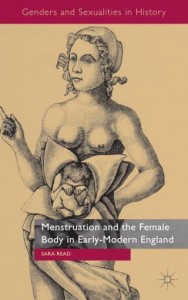
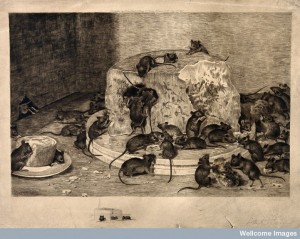
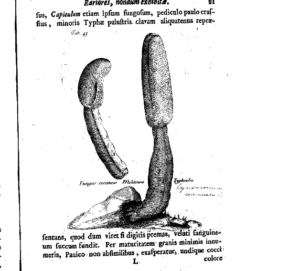
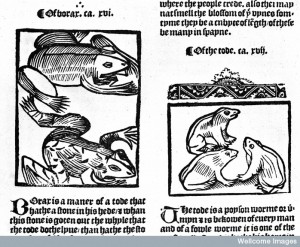
Ever since my own little foray into Scottish midwifery, I have longed to see a social history of early modern midwives in Scotland. The circumstances were so different to those south of the Border that such a study, especially if both rural and urban areas could be included in a detailed regional survey, would be invaluable for comparative purposes.
Given the low level of female literacy, and the shortage of urban centres in which midwifery could become a regular trade, I would suspect that one might find women from an even higher level of the social strata continuing to be involved, as happened in some parts of Euroipe.
I am glad to see that the Kirk Sessions papers are useful, as I suspected they might be, but I wonder how full are the other sources which one would need to place socially the midwives mentioned there, especially once one leaves such places as Aberdeen.
I would be very interested to know if anyone has published anything, partly because I would like to see how many mistakes I made, but also because I am hoping to publish a survey of early modern midwifery in Europe and beyond.
see pages 13 to 16 in
http://www.academia.edu/3358503/Historians_as_Demonologists_The_Myth_of_the_Midwife-witch